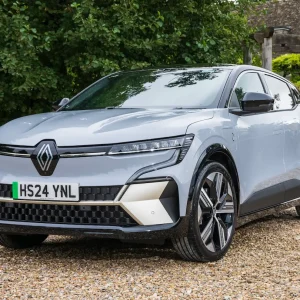If you’re wondering quite how Suzuki can shoe-horn yet another small car into its range, you’re not alone. Alongside the Swift, Celerio and Jimny, the Japanese firm is hardly short-changed when it comes to the more diminutive areas of the car market.
And now we have this new Baleno supermini joining the range too. On paper, the Baleno might look like an unnecessary addition to the range, but Suzuki is pitching it as a larger, more practical and rational choice alongside the sportier Swift. Suzuki also expects the Baleno to continue its range’s appeal to businesses with around 25% of sales going to contract hire and leasing fleets including Motability. The latter is a big push for Suzuki, especially with the S-cross (which is due a facelift in October) and the recently arrived Vitara.
With this new Baleno, though, it’s not hard to see the appeal for company drivers at this level. There’s just a choice of two petrol engines: a 1.0-litre, three-cylinder turbo with 111hp, 105g/km emissions and an 18% BIK rate, or a 90hp 1.2-litre with a mild-hybrid system capable of 94g/km emissions and 15% BIK. Both get a five-speed manual gearbox, but only the 1.0-litre has the further option of a six-speed automatic, while the hybrid gets a stop-start system.
It’s no surprise, either, that Suzuki expects the smaller 1.0-litre to be the best seller in the range. It’s not only faster with a 11.4-second 0-62mph time and 124mph top speed (12.3 seconds and 111mph for the 1.2), but it’s also not that far behind in terms of average fuel economy, with 62.7mpg versus 70.6mpg.
On the road, the three-cylinder engine easily proves to be the better choice of the two.
The offbeat thrum of the engine gives the Baleno a lovely character and a lively and sprightly feel on the move, although we wouldn’t mind a six-speed manual gearbox. There’s little to recommend in terms of driver enjoyment compared with some of its rivals, but it’s inoffensive as well as being unremarkable.
By comparison, though, the hybrid feels like it constantly needs to be worked hard to get the best from it and the older 1.2-litre engine is rather too vocal for our liking. We actually achieved better economy on our drive in the 1.0.
But inside is where the Baleno is probably at its most impressive. A dominant dashboard screen that includes a reversing camera and satnav on all models (there’s also alloy wheels, air-conditioning, DAB and Bluetooth as standard) is the Suzuki’s highlight. Although in some places the plastics could be improved, overall the build quality is good and there’s masses of head and legroom in the front and rear seats with easily enough space for one six-footer to sit comfortably behind another. It’s no exaggeration to say that it probably has at least as much space as, if not more than, some cars from the Ford Focus/VW Golf class above. Praise indeed.
The reality is that few buyers are likely to opt for the Baleno against the more emotion-led choices in this class such as the Mini, Renault Clio or even in the in-house Swift. But against the Skoda Fabia, Hyundai i20 or Citroen C3, we think it’s got a good chance. It may not be about to set the world alight, but there’s a lot more going for the Baleno than there first looks.
Suzuki Baleno 1.0 SZ5 Boosterjet |
| Model price range £12,999-£15,349 |
| Residual value 31.0% |
| Depreciation £9619 |
| Fuel £4709 |
| Service, maintenance and repair £2216 |
| Vehicle Excise Duty £40 |
| National Insurance £1155 |
| Cost per mile 37.2p |
| Fuel consumption 62.7mpg |
| CO2 (BIK band) 105g/km (18%) |
| BIK 20/40% per month £42/£84 |
| Warranty 3yrs/60,000mls |
| Boot space (min/max) 320/1085 litres |
| Engine size/power 998cc/111bhp |





